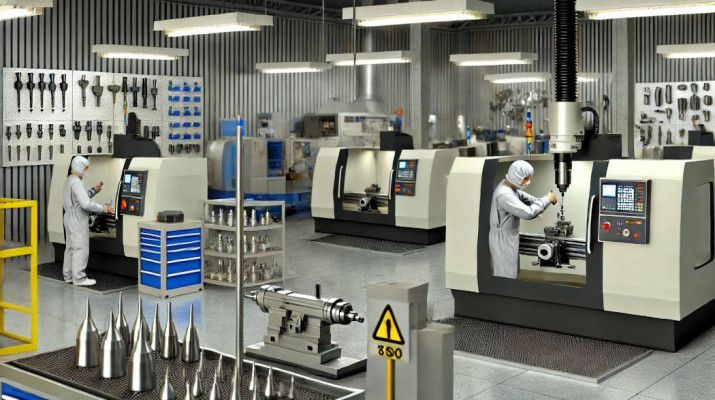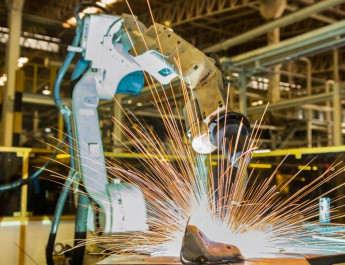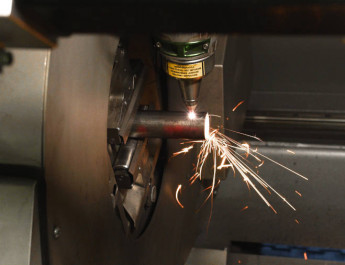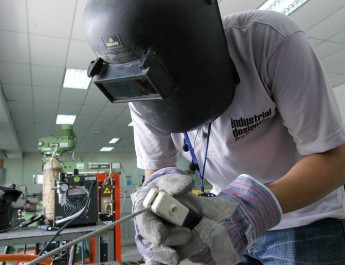Machining is one of the most important processes in the metal industry, enabling the precise shaping and finishing of metal components. In this article, we will explore various machining methods, their advantages, disadvantages, and applications.
Introduction to Machining
Machining involves removing material from a workpiece using a cutting tool to achieve the desired shape, dimensions, and surface quality. Machining techniques are applied in various industries, from automotive to aerospace and medical.
Basic Machining Methods
Turning
Turning is one of the most common machining methods. It involves rotating the workpiece around its axis while the cutting tool moves along the machined surface. Turning can be used to produce cylindrical and conical shapes.
Advantages:
- High dimensional precision
- Good surface finish
- Wide range of materials
Disadvantages:
- Limited capability for machining complex shapes
- High cost of tools
Milling
Milling is a method where a rotating milling tool removes material from a stationary workpiece. Milling allows for the machining of planes, grooves, holes, and 3D shapes.
Advantages:
- Versatility
- Capability to machine complex shapes
- Wide range of milling tools
Disadvantages:
- High cost of milling machines
- Need for a large number of tools for different operations
Drilling
Drilling is the process of creating holes in a material using a rotating cutting tool – a drill. Drilling can be performed on various types of machines, from bench drills to CNC machining centers.
Advantages:
- Simple technology
- Low cost of tools
- Speed in creating holes
Disadvantages:
- Limited precision
- Potential for defects in deep holes
Grinding
Grinding is a finishing process where a rotating abrasive tool removes a small amount of material to achieve a very smooth surface and high dimensional accuracy.
Advantages:
- Very high surface quality
- Dimensional precision
- Ability to machine hard materials
Disadvantages:
- High cost of abrasive tools
- Low material removal rate
Advanced Machining Methods
CNC Machining
CNC (Computer Numerical Control) machining is a technique where a computer controls the movement of tools and the workpiece. CNC is used in turning, milling, drilling, and many other machining processes.
Advantages:
- High precision and repeatability
- Process automation
- Ability to machine complex shapes
Disadvantages:
- High cost of purchasing and maintaining CNC machines
- Need for specialized knowledge for programming
Electrical Discharge Machining (EDM)
EDM is a machining process where the tool and workpiece are submerged in a dielectric fluid. High voltage causes sparks that melt and remove material from the workpiece.
Advantages:
- Ability to machine very hard materials
- Precise shaping of complex geometries
- No direct contact between tool and material
Disadvantages:
- Low material removal rate
- High cost of EDM tools and machines
Applications of Machining
Automotive Industry
Machining is crucial in manufacturing automotive parts, such as crankshafts, cylinder sleeves, connecting rods, and drivetrain components.
Aerospace Industry
In aerospace, machining is used to produce jet engine components, wings, fuselages, and other parts that require high precision and strength.
Medical Industry
In medicine, machining is used to produce surgical tools, implants, and other precise medical devices.
Conclusion
Machining is an integral part of the modern metal industry, offering a wide range of methods and techniques that allow for precise and efficient material processing. With continuous technological advancements, machining is becoming increasingly sophisticated, enabling the production of more complex and demanding components.
References
- “Fundamentals of Machining,” Jan Kowalski, Industrial Publishing, 2020
- “Advanced CNC Machining Techniques,” Anna Nowak, Technical Publishing, 2019
- “Electrical Discharge Machining,” Piotr Wiśniewski, Scientific Publishing, 2018
- “Machining Methods,” TOKAR CNC Technology, 2024
We invite you to further explore the topic of machining and to apply the knowledge in practice!




